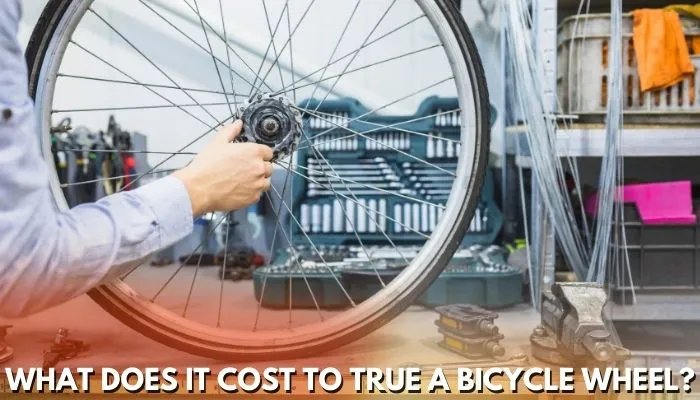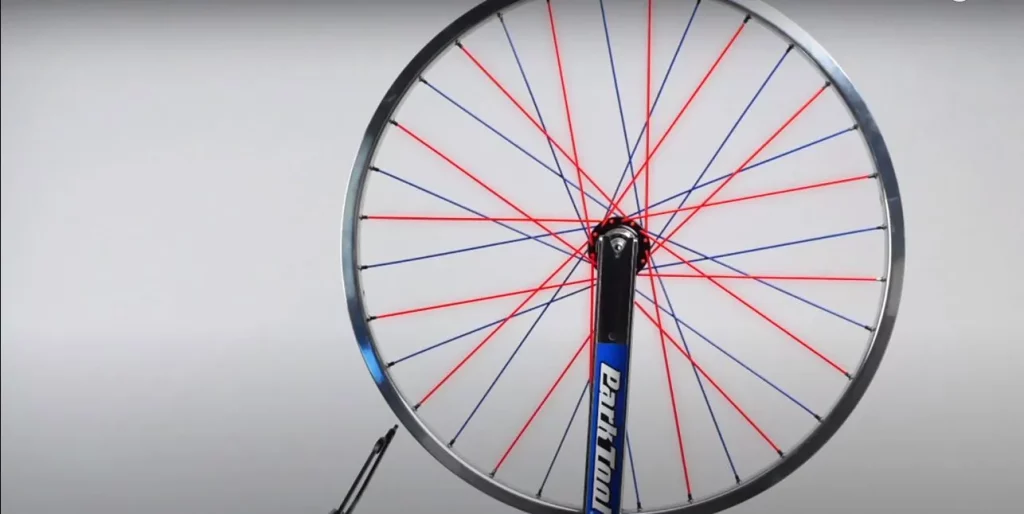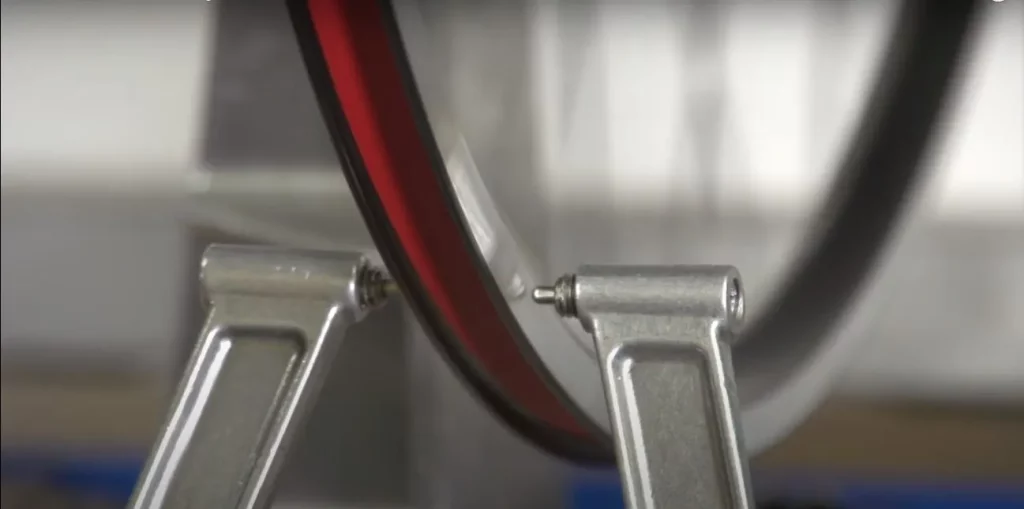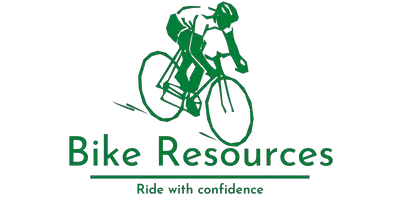What Does It Cost to True a Bicycle Wheel?

Have you noticed that your bike’s wheels sometimes produce a minor swinging noise as you spin it? Your bike’s wheel is probably bent, which makes more sense. When this awful time comes, you may not be able to drive your bike, and it will not be possible to readjust it.
A new wheel can be purchased, the bike wheel can be trued on your own, or it can be sent to a neighboring bike shop to be repaired.
So how much does it cost to true a bike wheel? You will be pleasantly surprised to discover how easily and quickly it can be mended for only a few dollars. Let us Scroll down to the know-how section.
Table of Contents
How Much Does It Cost To True A Bike Wheel?
The simple answer is that truing can cost somewhere between 15 to 40 dollars per wheel, based on whether you choose to do it yourself or leave it in the capable hands of an expert at your nearby repair shop.
The first time you do it manually, truing your bike tire will cost you approximately 20 dollars. Leg straps and spoke wrenches, two crucial pieces of equipment needed to true your wheel correctly, are also what contribute to this expense.
Although it’s incredibly affordable, you should really not pass it up simply because of that. A truing stand is a handy tool, and it costs more money than you can use to make sure your tires are absolutely true.
What Makes Wheel Truing Crucial?

Your wheels will continue to wobble and may even appear to seem bent if your spokes are loosening. The term “truing” relates to leveling your wheel to minimize swaying.
Truing is essential to upkeep. If you take care of your bike’s wheels, you will only have to change them for a significant amount of money.
Make sure you are not riding on unsteady wheels, which might result in a collision and wounds, as this is also important for bike safety.
How to Identify Whether a Wheel Needs to Be Trued
If you feel that the brake pad and wheels are grinding against each other, your bike’s wheels definitely have to be trued. The tire is producing what seems to be a rubbing and grinding sensation. One of the most apparent indications that a wheel is not in proper alignment is generally the noise.
It’s not always simple to determine if your bike tire is deformed by merely looking at it while riding. In order to spin the troublesome wheel, you must flip your bike over and get very near it.
Check to see whether there is any instability in the wheel by spinning it once more, but this time more gradually.
In order to witness the wheel spin both from the front and the back, be sure that you are on both sides of it.
After you have tried your wheel a few times, you will be able to determine whether the time is appropriate, dependent on how long it has been since your most recent truing.
Precisely What Is Required To True A Biking Wheel?

You will need to spend a little expenditure on a few essential pieces of equipment before you true your bike wheel for the very first time.
Most likely, you want to know how much does it cost to true a bike wheel. Given that each item costs approximately ten dollars, the overall price of the tools should not be greater than twenty dollars.
The good news is that the less expensive tools will operate just as well as the more expensive options. Therefore it’s pretty fair if you want to employ the less expensive tool manufacturer.
You will just necessitate the following tools to true your bike wheel:
- Leg restraint (thigh strap)
- Spoke tool or spoke wrench
If you have these with you while riding, you can even fix your wheel on the route if it shows noticeable symptoms of wobbling.
- Leg Strap
Your bike wheel will be fixed with the help of your leg strap. For such types of straps, IOGEAR is a trustworthy manufacturer. You won’t, however, be placing this on your legs. By using leg straps on the braking grips, only enough tension is applied to the brake pads to straighten out the most deformed part of the wheel. This will make it much easier to identify the weak areas in the spokes, which will enable you to decide whether to move the tire to the left or right.
- Spoke Wrench
You can tighten and loosen your spokes with the assistance of your spoke wrench. Rods known as spokes are required to connect the hub and rim of your bike. They are in charge of dispersing the load between these two. A twisted or unstable wheel is the consequence of loosened spokes.
There are several various kinds of spoke wrenches, and any of them will function effectively. Even after trying, a wheel might sometimes still be “out of round,” as even the most professional wheel truing specialists will notice.
To make sure you are leveling your wheel to specs in these conditions, you need to have a truing stand. However, you may repair this with only a strip of adhesive tape as well, as a truing stand overall costs between 50 and 80 dollars.
Can you true a Bike Wheel without a Truing Stand?
You very certainly can. Without a truing stand, entirely true your bike by complying with the steps indicated below. To better learn about the procedure, view all the steps mentioned below. You can take your wheel to your local bike repair shop to get it inspected if it still seems to be out of shape.
How Do You True A Bicycle Wheel?
Although we hope our bike wheels will never need to be fixed, smoother rides might be achievable with the appropriate expertise and accessories. What will be our starting point, then? Let us find out.
- It would be best if you first inverted your bike (flip it upside down).
- Take a position in front of your upside-down bike, take possession of the troublesome wheel, and rotate it so that it is situated in the space between the two brake pads.
- Observe how your bike’s wheel wiggles and spins unevenly between both two brake discs when you rotate it.
- Your leg strap should be fastened to the hand brake.
- Extend the thigh strap as you turn the wheel of the bike. The brake pads and wheel rim should both be making grinding sounds. You have identified the challenging problem of the wheel, and it is here that your bike is deformed.
- It would help if you altered the spokes in this region of the wheel now that you are knowledgeable of where the distortion is happening.
- The spoke accountable for the wobble has to be adjusted next. Turn the spokes around to approximately a quarter circle using a spoke wrench.
- With the spoke wrench, tighten the spokes adjacent to the one you just tightened. Then, loosen the spokes adjacent to those. By doing this, you may guarantee that your bike wheel is not over-tightened.
- Make sure to double-check your workmanship by rotating the bike wheel to make sure it won’t jiggle or make a sound while you ride it. If that is the case, you undoubtedly have a wheel that has recently been “perfectly trued.”
How Much time does it require to True a Bicycle Wheel?
Based on the handyman’s level of expertise, you should count on the truing technique taking approximately 20 minutes. When you choose to true a bike wheel for the very first time entirely on your own, be sure to allow additional time for experimentation and error.
Why Do Bicycle Wheels Lose Their Trueness?
The spokes on your bike wheel have probably played loose over time, and this is the primary culprit of its out-of-true situation.
Your bike’s wheels grow looser when you are riding because of the pressure and force on them. To maintain the spokes on your wheel firm, the tension should be distributed equally across each spoke. When deciding whether to correct your bike wheel, you can occasionally conduct a tightness inspection on your spokes.
A Few Points to Remember
We refer to the spokes on your bike’s rim as left and right spokes since they simultaneously attach to the left and right sides of the bike’s axle. You may quickly straighten your wheel by altering the spokes’ stiffness and softness. But when adjusting the spokes’ tightness or looseness, it is recommended that you keep a few considerations in mind. The following are a few of these:
- Rather than following the conventional understanding of tightening the right spoke initially and then the left, adjust the side spoke in a clockwise manner. If you’re from the UK or Australia, switch it the other way around.
- To draw going to one side efficiently, you would only have to make a fraction or quarter turns.
- As you loosen, tighten. A neighboring, contrasting spoke must be correspondingly loosened for each spoke that is tightened. By using this technique, the rim is shielded from problems caused by excessive tightness.
- Every time you stop the rim from grinding on one side, don’t forget to tighten the brake.
- Going to the closest bike shop for professional guidance and service will help if you try and are feeling extremely unsure about it.
Can We Miss Things?
We have fantastic news for those who are just starting. Even when you make a mistake, trueing does not irreparably damage your wheel. The only error that can occur would be when we over-tension a spoke to the extent that it breaks. Additionally, the threads on the spokes or nipple of the bike may be stripped as a reaction to this.
FAQs:
Is truing a bicycle wheel worth all the effort?
Yes, it is undoubtedly worthwhile to test out a bike wheel. Your bike wheel will last longer, thanks to it. You also have the benefit of smoother rides after truing a bike wheel. As an outcome, there won’t be any falling or swaying for you.
What Is the Recommended Period for Trueing My Wheels?
Once or twice a year, you should true your wheels, but it’s also a wise option to regularly conduct the spoke tension test (discussed above) to test for any loose spokes that could cause unbalanced wheels. The more you use your bike, the more frequently your wheels will have to be trued. A significant element is the age of your wheels because more updated wheels will endure more before truing is needed.
Does riding a bike with a shaky wheel pose any risks?
It all depends on why they’re misinformed. Broken spokes ought to be considered since an inconsistency in the spokes’ pressures may indicate a weakening in one (or more) of them. However, the rim is in danger of bursting even if you can cope with one or two for a short time.
How do you determine whether your wheels need to be trued?
It’s time to true the wheels if they are rubbing noises while biking or generating a “thwip” sensation every time you turn. Sometimes the irritating noises may not even be noticeable; instead, you might sense a drop in acceleration or a rough ride on a straight stretch of road.
Conclusion:
So, how much does it cost to true a bike wheel? If you choose to do it manually, it should cost you no more than 20 dollars to accurately true any number of wheels without the help of a truing stand.
The benefit of handling this yourself is you’ll be able to keep using the equipment for later wheel truing. You should expect to pay between $20 and $30 for each bike wheel if you take it to a technician. A professional can use a truing stand to make your bike wheel precisely true, a perk of taking your wheel to them.
